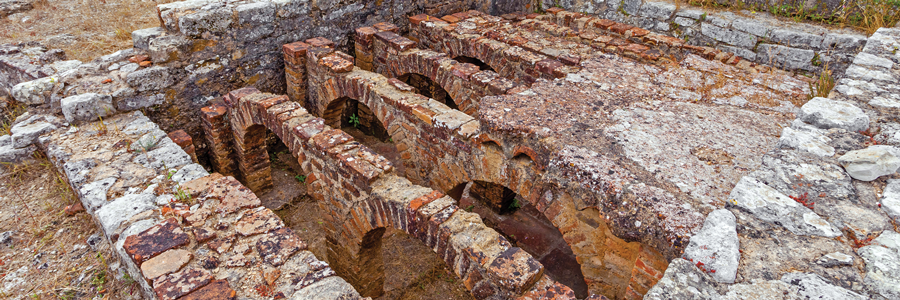
Are you fond of gas furnaces? If so, you join a long history of heat-seeking furnace enthusiasts who feverishly wanted to keep warm on those cold, winter nights.
1.
Chersiphron and The Temple of Artemis – The Temple of Artemis, one of the Seven Ancient Wonders of the World, was designed by Greek architect Chersiphron. The Temple was built with a central heating system around 350 BC, which at the time was an incredible engineering marvel! To create warmth, a large fire was used to heat air that would be forced through giant flues that were planted in the ground. These hot flues would heat the floor and eventually the air in the entire temple.
1
2.
Ancient Romans - Roman engineers developed an “advanced” central heating system known as the hypocaust. The wealthy Romans raised their floors on top of stacked tiles or stones which created a hollow space under the flooring. Heat from a wood-burning fire warmed the empty space as well as the rooms above. But when the Roman Empire fell, so did the use of hypocausts. Wood-burning fireplaces became all the rage again and the heating system of choice for over 1,000 years.
2
3.
Emperor Heliogabalus3 – In 200 AD, it is said that the Emperor Heliogabalus had a heated palace. To achieve this engineering feat, a stove was placed in a brick chamber under rooms. Outside air was channeled through primitive ducts into the chamber. The surrounding air was heated by the stove and rose through openings in the floor to the rooms above.
3 It was good to be the Emperor!
4.
William Strutt – In 1805, the Industrial Revolution spurred the creation of the first cast iron and brick forced hot air furnace. This Englishman’s furnace had a lower and upper casing, allowing separate spaces for the cooler and heated air. As the cool air from the outside circulated around the lower brick and the iron casing, the air was heated. The hot air rose into the upper casing which was then flowed through large central ducts and a system of louvers and dampers.
4 As a result, over the next few decades, wealthy homeowners worldwide incorporated these basic furnaces into their homes.
5.
Alice Parker – In 1919, Alice Parker patented the first zoned, natural gas central heating system. Her invention replaced what was then the most common method for heating – burning wood in fireplaces or stoves. Although Parker’s exact design was never implemented, the patent paved the way for the first coal-fueled, electric fan and ductwork forced air furnace in 1935.
5
6.
YOU – Today, a wide array of gas furnaces are available with energy-efficient performance ratings up to 98% AFUE. It’s much easier to get indoor comfort than anytime in history!

This article was included in the
2017 Fall/Winter Good Life Magazine.
1 Ancient Greeks Invented Central Heating. (n.d.). Retrieved from Greek Boston: http://www.greekboston.com/culture/inventions/central-heating/
2 ,3, 4 Nagengast. (2001, Nov 12). An Early History Of Comfort Heating. Retrieved from ACHR News: http://www.achrnews.com/articles/87035-an-early-history-of-comfort-heating
5 New Jersey's All-Time Greatest Innovators. (2014, July 7). Retrieved from NJ Chamber of Commerce: http://www.njchamber.com/index.php/350innovators/643-20-alice-h-parker